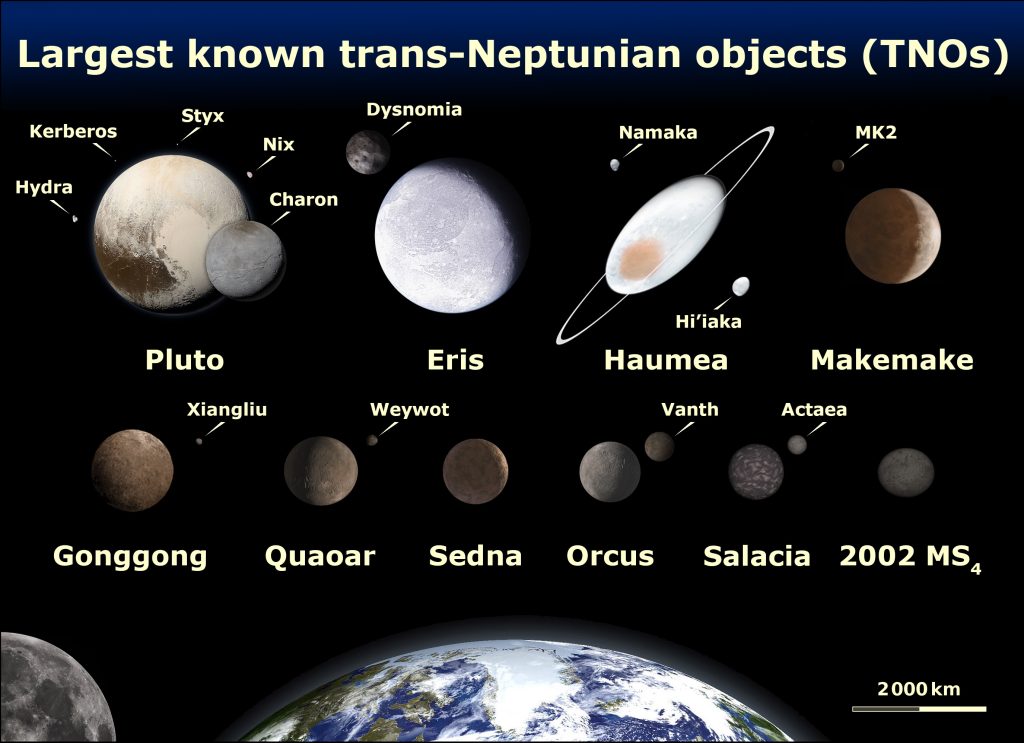8.5 Trans-Neptunian Objects, the Kuiper Belt, and the Oort Cloud
Trans-Neptunian Objects (TNO) are any solar system minor planet that orbits the sun at a greater average distance than Neptune. Pluto is now considered a TNO, as is Eris. As of July 2014, over 1,500 trans-Neptunian Objects have been cataloged and of these, some 200 have been designated as dwarf planets. From Earth, astronomers study TNO heat emissions, colours, and spectra.The Kuiper Belt is a region beyond the orbit of Neptune at 30 Astronomical Units (AU) to about 50 AU from the sun. It is sometimes called the Edgeworth–Kuiper Belt. The Kuiper Belt is much larger than the Asteroid Belt. It’s about twenty times as wide and twenty to two hundred times as massive. Kuiper Belt Objects, called KBOs , are composed of rock and metal, like the asteroids, but also frozen ices like ammonia, methane, and water. Trans-Neptunian Objects are Kuiper Belt Objects (KBOs), but KBOs are not TNOs because the distance range of KBOs from the sun is much farther out in the solar system. At least two moons – Saturn’s Phoebe and Neptune’s Triton – are believed to be captured KBOs. To date, over 1,000 KBOs have been discovered and around 100,000 KBOs are suspected to exist.
KBOs are fragments from the original solar system’s protoplanetary disc that did not combine to form the more-massive and larger bodies. Astronomers believe that belts of fragments like the solar system’s Kuiper Belt are present around other stellar systems being studied.
Beyond Neptune

Largest known Trans Neptunian Objects by Lexicon, CC BY-SA 3.0.
The Oort Cloud is a hypothesized spherical cloud of icy objects up to 50,000 AU from the sun. This spherical cloud is the primary source of long-period comets. No Oort Cloud Objects have been found, to date. Any object within the Oort Cloud would be called an Oort Cloud Object, (OCO). The Oort Cloud would represent the physical boundary of the solar system.
Attribution
“100 Trans-Neptunian objects, the Kuiper Belt, and the Oort Cloud” and “101 The Oort Cloud and Kuiper Belt” from Introduction to Astronomy by Florida State College at Jacksonville and Dr. Mike Reynolds are licensed under a Creative Commons Attribution 4.0 International License, except where otherwise noted.

